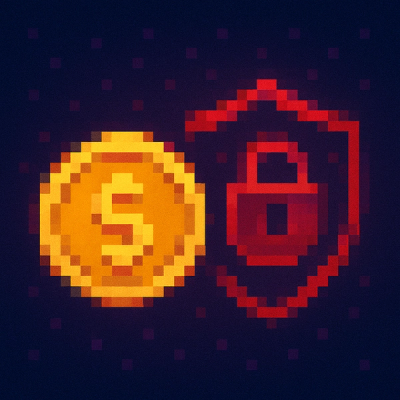
Security News
Security Community Slams MIT-linked Report Claiming AI Powers 80% of Ransomware
Experts push back on new claims about AI-driven ransomware, warning that hype and sponsored research are distorting how the threat is understood.
Bring your own struct and make Go's flag package pleasant to use.
go get github.com/itzg/go-flagsfiller
import "github.com/itzg/go-flagsfiller"
defaultusagerequired and validate with Verify() method (cannot be combined with default tag)[]string where repetition of the argument appends to the slice and/or an argument value can contain a comma or newline-separated list of values. For example: --arg one --arg two,threemap[string]string where each entry is a key=value and/or repetition of the arguments adds to the map or multiple entries can be comma or newline-separated in a single argument value. For example: --arg k1=v1 --arg k2=v2,k3=v3time.Time parse via time.Parse(), with tag layout specify the layout string, default is "2006-01-02 15:04:05"net.IP parse via net.ParseIP()net.IPNet parse via net.ParseCIDR()net.HardwareAddr parse via net.ParseMAC()RegisterSimpleType(ConvertFunc), check time.go and net.go to see how it works
package main
import (
"flag"
"fmt"
"github.com/itzg/go-flagsfiller"
"log"
"time"
)
type Config struct {
Host string `default:"localhost" usage:"The remote host"`
DebugEnabled bool `default:"true" usage:"Show debugs"`
MaxTimeout time.Duration `default:"5s" usage:"How long to wait"`
Feature struct {
Faster bool `usage:"Go faster"`
LudicrousSpeed bool `usage:"Go even faster"`
}
}
func main() {
var config Config
// create a FlagSetFiller
filler := flagsfiller.New()
// fill and map struct fields to flags
err := filler.Fill(flag.CommandLine, &config)
if err != nil {
log.Fatal(err)
}
// parse command-line like usual
flag.Parse()
fmt.Printf("Loaded: %+v\n", config)
}
The following shows an example of the usage provided when passing --help:
-debug-enabled
Show debugs (default true)
-feature-faster
Go faster
-feature-ludicrous-speed
Go even faster
-host string
The remote host (default "localhost")
-max-timeout duration
How long to wait (default 5s)
Flags can be marked as required using the required:"true" struct tag. After parsing command-line arguments, call the Verify() method to ensure all required flags have been provided:
type Config struct {
Host string `required:"true" usage:"The remote host"`
Port int `default:"8080" usage:"The port"`
Username string `required:"true" usage:"Username for authentication"`
}
var config Config
filler := flagsfiller.New()
err := filler.Fill(flag.CommandLine, &config)
if err != nil {
log.Fatal(err)
}
flag.Parse()
// Verify all required fields are set
err = filler.Verify()
if err != nil {
log.Fatal(err) // Will fail if Host or Username not provided
}
Note: A field cannot be both required and have a default value. Attempting to use both tags will result in an error during Fill().
saml-auth-proxy shows an end-to-end usage of flagsfiller where the main function fills the flags, maps those to environment variables with envy, and parses the command line:
func main() {
var serverConfig server.Config
filler := flagsfiller.New()
err := filler.Fill(flag.CommandLine, &serverConfig)
if err != nil {
log.Fatal(err)
}
envy.Parse("SAML_PROXY")
flag.Parse()
where server.Config is declared as
type Config struct {
Version bool `usage:"show version and exit"`
Bind string `default:":8080" usage:"host:port to bind for serving HTTP"`
BaseUrl string `usage:"External URL of this proxy"`
BackendUrl string `usage:"URL of the backend being proxied"`
IdpMetadataUrl string `usage:"URL of the IdP's metadata XML"`
IdpCaPath string `usage:"Optional path to a CA certificate PEM file for the IdP"`
// ...see https://github.com/itzg/saml-auth-proxy/blob/master/server/server.go for full set
}
Flagsfiller can be used in combination with google/subcommands to fill both global command-line flags and subcommand flags.
For the global flags, it is best to declare a struct type, such as
type GlobalConfig struct {
Debug bool `usage:"enable debug logging"`
}
Prior to calling Execute on the subcommands' Commander, fill and parse the global flags like normal:
func main() {
//... register subcommands here
var globalConfig GlobalConfig
err := flagsfiller.Parse(&globalConfig)
if err != nil {
log.Fatal(err)
}
//... execute subcommands but pass global config
os.Exit(int(subcommands.Execute(context.Background(), &globalConfig)))
}
Each of your subcommand struct types should contain the flag fields to fill and parse, such as:
type connectCmd struct {
Host string `usage:"the hostname of the server" env:"GITHUB_TOKEN"`
Port int `usage:"the port of the server" default:"8080"`
}
Your implementation of SetFlags will use flagsfiller to fill the definition of the subcommand's flagset, such as:
func (c *connectCmd) SetFlags(f *flag.FlagSet) {
filler := flagsfiller.New()
err := filler.Fill(f, c)
if err != nil {
log.Fatal(err)
}
}
Finally, your subcommand's Execute function can accept the global config passed from the main Execute call and access its own fields populated from the subcommand flags:
func (c *loadFromGitCmd) Execute(ctx context.Context, f *flag.FlagSet, args ...interface{}) subcommands.ExitStatus {
globalConfig := args[0].(*GlobalConfig)
if globalConfig.Debug {
//... enable debug logs
}
// ...operate on subcommand flags, such as
conn, err := net.Dial("tcp", fmt.Sprintf("%s:%d", c.Host, c.Port))
}
Refer to the GoDocs for more information about this module.
FAQs
Unknown package
Did you know?

Socket for GitHub automatically highlights issues in each pull request and monitors the health of all your open source dependencies. Discover the contents of your packages and block harmful activity before you install or update your dependencies.

Security News
Experts push back on new claims about AI-driven ransomware, warning that hype and sponsored research are distorting how the threat is understood.

Security News
Ruby's creator Matz assumes control of RubyGems and Bundler repositories while former maintainers agree to step back and transfer all rights to end the dispute.

Research
/Security News
Socket researchers found 10 typosquatted npm packages that auto-run on install, show fake CAPTCHAs, fingerprint by IP, and deploy a credential stealer.